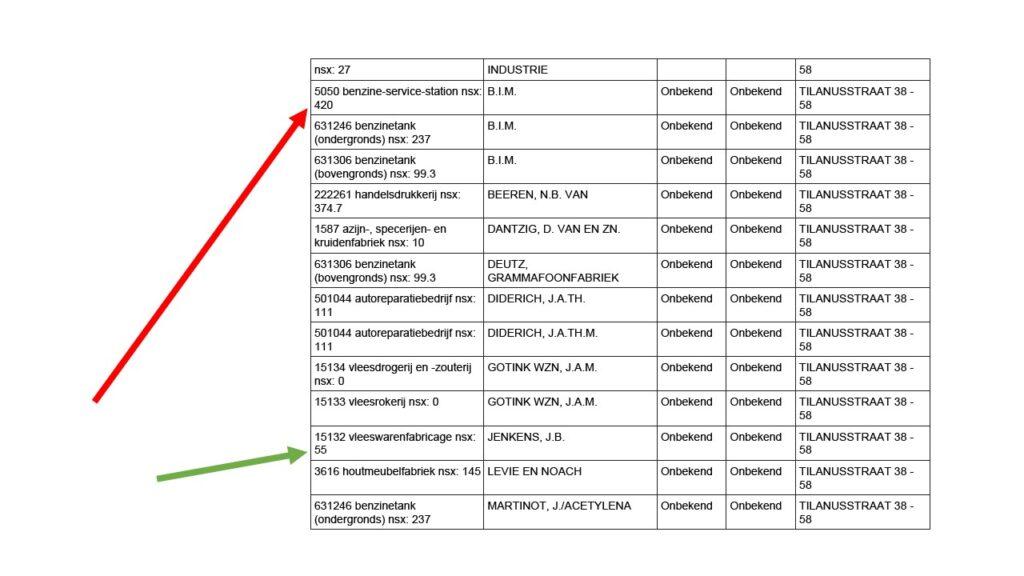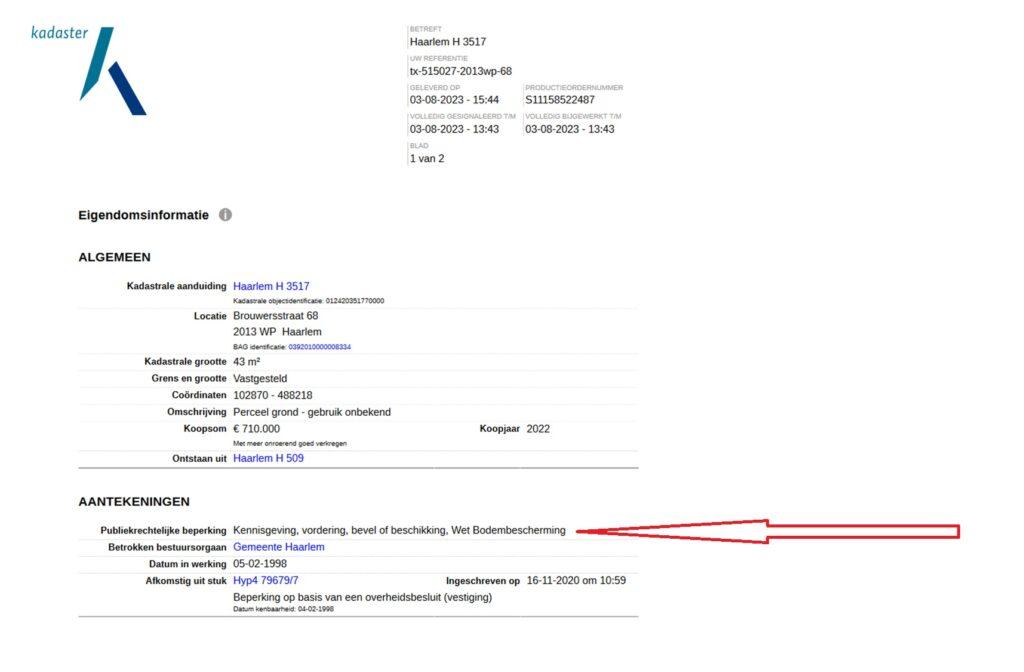Soil reports can often be incredibly long and extensive. We see this especially in soil reports in urban areas with many old neighborhoods. These reports can sometimes be as large as 40-70 pages. If you are a buyer of a house where you get such a report, it is effectively impossible to wriggle through this. See, for example, this troublesome soil report from Amaliastraat in Amsterdam. Therefore, in this article, we explain to you what you might do better in 3 simple steps:
Step 1
First, look up in that soil report the address of the property you want to know the soil conditions of. Suppose the address is “Village Street 83. You can very easily and quickly search the soil report for that address using the search function. On Windows PCs, this can be done with the CTRL-F buttons and on Apple with the Commend-F buttons.
Focus first on the information you see displayed at the address itself. So filter out for a moment all the many other locations mentioned in the report. In a soil report, it starts somewhere with a particular location and that is then often followed by a whole long zipline of different pieces of information that all relate to that location. You really have to keep paying attention until the long mess of info turns back into a new location (a new address). But the address of the property you want information from is most important. So make the search really easy for yourself by quickly searching the long bottom report for the address of the property with the keyboard shortcuts CTRL-F (Windows PCs) or Commend-F (on Apple PCs) .
Did you find that address? Then below that, look for the section where it says “Conclusion” and read whether there are any contaminants and/or oil tanks on the parcel in question. For example, that piece might look like this:

Here you read that there is various junk under the plot but this is an impediment, there is no serious soil contamination and most importantly and nothing needs to be remediated. Thus, a relatively “ok” result and no remediation that needs to take place (otherwise it would have assisted here that remediation was needed).
By the way, are you struggling with all the vague terms and abbreviations in the soil report? We get that! In this article we also explain to you what the most common terms all mean.
Step 2
Next, look at the “Historical suspicious activity in the report. That could be a list that looks something like this:

With any luck, there will be an NSX score among the various historical activities. An NSX score is a score that indicates the risk of contamination. Any NSX score above 100 is a risk of contamination. The higher the NSX score, the higher the risk of pollution at the home. Above, as an example, the red line indicates a gas station with an NSX score of 420 attached. Thus, this activity indicates that due to the presence of this gas station near your home, the risk of pollution at your home is high. The green line indicates a harmless-seeming activity, namely a meat processing plant with an NSX score of 55 (well below 100, in other words). So if there has been a company with a very high NSX score (higher than 100) within a 25-meter radius (this is the radius of what a soil report looks at) of your home then that indicates that there is a risk of contamination at that home.
Step 3
You should also have received a document called “Property Information” or “Cadastral Notice” or “Cadastral Extract” from the selling broker. That’s what it looks like. If it is known that the land near the house needs to be remediated or if a soil survey needs to be done, you will have to read that back on this cadastral excerpt. You will then see an annotation under the “Public Law Restriction” section. This then looks like this:

When you see that listed, alarm bells should ring with you. Something is going on at this property and this needs to be looked into further to see what is going on and what the consequences are for you as a buyer or owner of this property. Maybe it’s just a notification of contamination that you don’t and can’t do anything with. You can see this, for example, in the Haarlem neighborhood of Garenkokerskwartier, where many homes are reported as above and there is no remediation or significant other consequences. But it could also mean that it is serious.
Greater security
Is it all still too vague and unclear to you? Then ask an environmental research firm for a remote opinion or to conduct an exploratory soil survey on site. We have several good environmental research firms sitting throughout the Netherlands. If you would like to get in touch with one of these consulting companies in your area, please fill out this form and we’ll put you in touch with them (free service from us).
Are you just looking for a good buying agent to guide you (further) through the purchase of a property you’ve been looking at. We are a nationwide buying agent, so we can help you throughout the Netherlands. Take feel free to contact with us or call us at 023-2052296.

